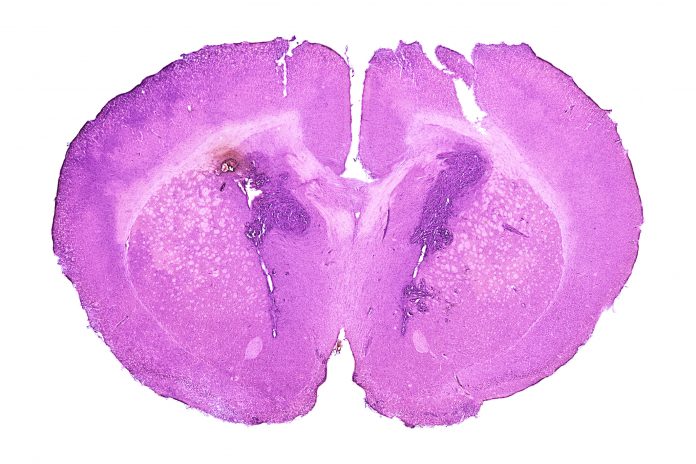
A new tool developed by researchers at Harvard Medical School (HMS) uses artificial intelligence (AI) to determine the molecular profile of a patient’s brain tumor during surgery. The advance can help surgeons know how much tissue to remove during surgery or whether to place tumor-killing drugs directly in the brain while the patient is still on the operating table.
The research appears today in the journal Med.
“Right now, even state-of-the-art clinical practice cannot profile tumors molecularly during surgery. Our tool overcomes this challenge by extracting thus-far untapped biomedical signals from frozen pathology slides,” said study senior author Kun-Hsing Yu, MD, PhD, assistant professor of biomedical informatics at the Blavatnik Institute at HMS.
The advance is important as surgeons want to have as much information as possible during tumor resection to remove the right amount of brain tissue. Removing too much can affect a patient’s neurologic and brain function, while removing too little may allow the cancer to grow and spread.
“The ability to determine intraoperative molecular diagnosis in real time, during surgery, can propel the development of real-time precision oncology,” Yu added.
The tool is called CHARM for “Cryosection Histopathology Assessment and Review Machine” and has been made freely available to other researchers. It still requires clinical validation and testing in real-world patients for FDA clearance.
CHARM was developed using 2,334 brain tumor samples from 1,524 people with glioma, comprising three separate patient populations. After it was trained, the team tested it on never-before-seen brain tissue samples with the AI tool distinguishing tumors with particular genetic mutations with 93% accuracy. It also accurately classified three major types of gliomas that have distinct molecular features that have different prognoses and different treatment regimens.
In addition, its ability to visually analyze the tumor tissue and surrounding cells detailed areas with greater cellular density and more cell death within the samples, both indicators of more aggressive disease. It could also pinpoint clinically important molecular alterations in a subset of low-grade gliomas, a subtype of glioma that is less aggressive and therefore less likely to invade surrounding tissue. All of these factors indicate a different propensity for growth, spread, and treatment response of the cancer.
A method used by the tool to determine the shape of the cells’ nuclei and the presence of edema surrounding cells is also used to help determine the molecular profile of the tumor, a feature that allows the model to be more accurate and replicate how a pathologist would visually assess the tumor.
According to the investigators, while the tool was trained on glioma samples, it could also be retrained on other brain cancer subtypes. CHARM would also need to be retrained periodically as new research emerges that affects tumor classifications.
“Just like human clinicians who must engage in ongoing education and training, AI tools must keep up with the latest knowledge to remain at peak performance,” Yu noted.













